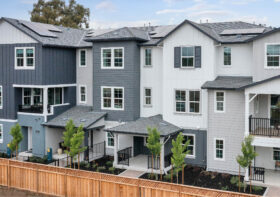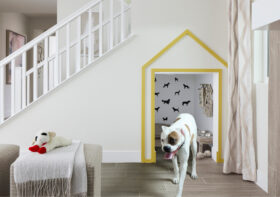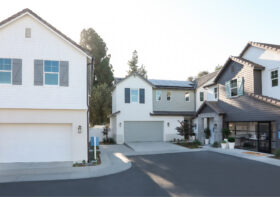Spotlight on Style: Contemporary
This month’s Spotlight on Style focuses on today’s architecture, aptly and presently called Contemporary. It’s family tree draws from many sources, ranging from building technology to architectural ideology to a global economy. Contemporary style is often confused and interchanged with its grandfather, Modern Architecture. While Contemporary learned much from his sage advice, it departs from Modernism’s early and mid-20th century philosophies of clean, minimalist simplicity sans ornamentation, the rigidity of “form follows function,” the “truth to materials,” and the “machine aesthetic” that resulted from the technology and mass production of the Industrial Revolution. Where the International style and its idealized forms seek to fit in any and all contexts, Contemporary instead focuses on site and climate. The present style also shows the contributions of Postmodernism, where decoration and historical reference reappear, and form becomes more fluid. Moreover, the global economy and internet affect the form, vision, vernacular, material availability, and details of how a design takes shape. Locally, we find examples of these influential styles in the works of Paul Williams, Cliff May, Joseph Eichler, and Richard Neutra.
Contemporary architecture is, therefore, a little difficult to precisely define, like writing a history textbook on current events. Yet, this is what excites me most about Contemporary architecture. Instead of examining fragments of pottery that is architectural history, we have wet clay spinning on the wheel!
Generally, the Contemporary style considers and weighs many factors as it develops: needs and desires of the client, artistic license, site, context, historical influence, and sustainability. Clean trim, cantilevers, smooth finishes, metal awnings, large amounts of glass, steel, and flat roofs are all part of the Contemporary vocabulary. As we strive to be better stewards of the environment, we design efficient spaces that allow for privacy as well as open areas for entertainment, with a focus on indoor/outdoor spaces that anchor us to our site and intertwine the home and the landscape. Energy efficient glass allows for ample amounts of natural light to cut our need of electricity and presents an open look to the Contemporary design. Single-pitched roofs allow for clerestory windows on one side and solar arrays on the opposite, contributing to our diminishing footprint, as well as putting a modern twist on the traditional gable. As environmental consciousness, sustainable materials, and innovative forms advance, the Contemporary style will continue to progress.
So, how are we going to define Contemporary? How can we here at WHA help you mold the present, and inevitably and unavoidably shape the future? We have an incredible responsibility – and an incredible opportunity – do not squander it. Let’s embrace it together. I’d like to encourage you – let’s get our hands dirty and start sculpting.










Leave a Reply